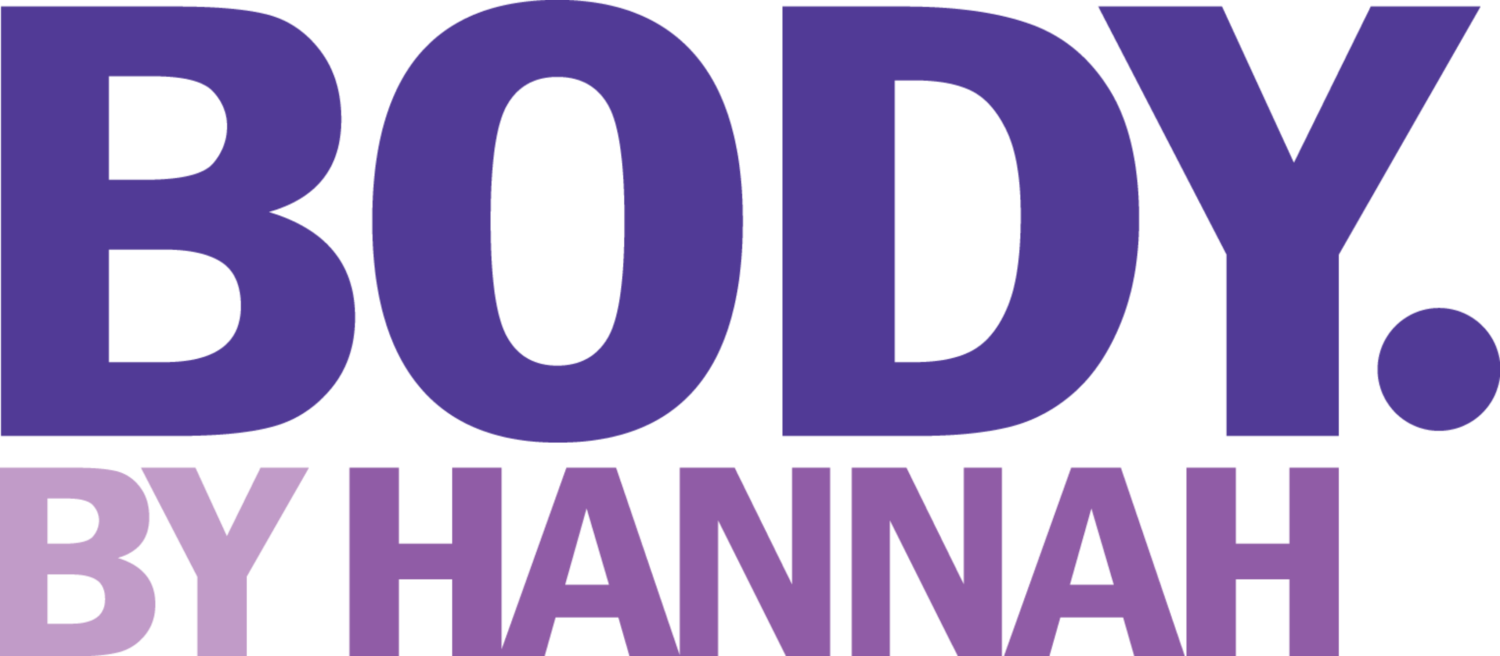Many women (AND MEN) experience pelvic floor problems, but often they ignore them, think it’s just a part of aging, or may be too embarrassed to talk to a professional about them. The specific issues can vary and may involve injuries or damage to muscles in the pelvic area, the bowel, bladder, or uterus. Getting help early usually means better treatment results. If you do think you have issues, we recommend seeing your doctor who can do an exam to diagnose and figure out the best treatment. Treatment options range from medications to surgery, laser treatment, or physical therapy, depending on what's going on and where.
With our clients at the Body by Hannah Studio, we believe that proactively training the pelvic floor just like all of our other muscle groups is a great way to prevent weakening of the pelvic floor muscles over time. Creating mindfulness around many of our exercises to properly breathe and engage/relax these muscles is our first defense from future issues.
Let's break down five common problems when the pelvic floor isn't working properly. But first, think of the pelvic floor like a hammock made of lots of connected muscles that support your bladder, bowel, and other organs. These muscles help with things like controlling when you pee or poop, keeping your posture in check, and even sexual function.
Needing to pee a lot or urgently: If you're constantly running to the bathroom, it might be due to something called overactive bladder. Basically, the muscles in your bladder contract too much, making you feel like you gotta go all the time. Strengthening your pelvic floor can help calm down your bladder, reducing those urgent feelings.
Leaking urine when you cough, sneeze, or laugh: This is called stress urinary incontinence. It happens when the muscles supporting your bladder and urethra are weak or damaged, often from childbirth. Even simple movements like laughing can make you leak a little.
Trouble with pooping: Weak pelvic floor muscles can mess with how well you poop. Sometimes it leads to constipation or feeling like you can't fully empty your bowels. The process of pooping is pretty complex, and when those pelvic muscles aren't doing their job right, it can cause pain or discomfort.
Back or pelvic pain, or pain during sex: Your pelvic floor muscles play a role in a lot of daily activities, like keeping you upright and moving smoothly. But if they're weak or damaged, they can cause pain in your back or pelvis. They can also make sex uncomfortable, especially during orgasm, when those muscles contract strongly.
Feeling like things are falling down there: Damage to the pelvic floor can cause organs like the uterus or bladder to sag or bulge into the vagina. This is called prolapse. It's more common as women get older and their bodies change. You might feel pressure or heaviness in your pelvis, especially when standing for a long time or lifting heavy things.
We created a FREE pelvic floor introductory series with Dr. Kat Hamblin that will help you understand better what the pelvic floor is and how to begin to activate it and strengthen it! Download the BBH Fit App and search for Pelvic Floor Series to get started at home!


